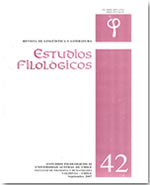Understanding verbal ironies
Main Article Content
Abstract
This paper gives an account of the development of understanding verbal ironies by children, measured in 985 participants and using an interactive evaluation instrument applied to each subject. They had to recognize the interpretation of one type of irony. The results show that there are quantitative changes in the age of the subjects, significant differences in four groups of age could be observed (5-7, 8-9, 10-11, 12-14), and non-factual statements seemed easier to understand. We conclude that the development of verbal irony is a slow phenomenon that takes place in all school age and it is affected by the degree of prototype of the statements (from the more prototypical and contrastive ironies to the less prototypical and contrastive ones).

